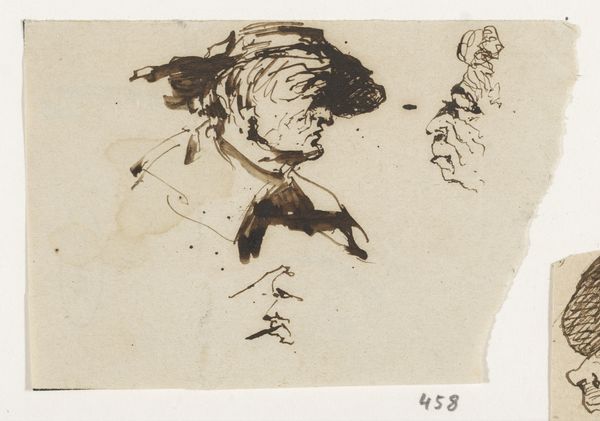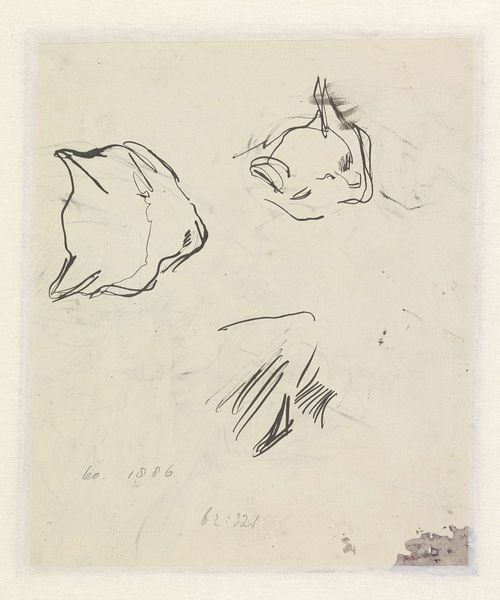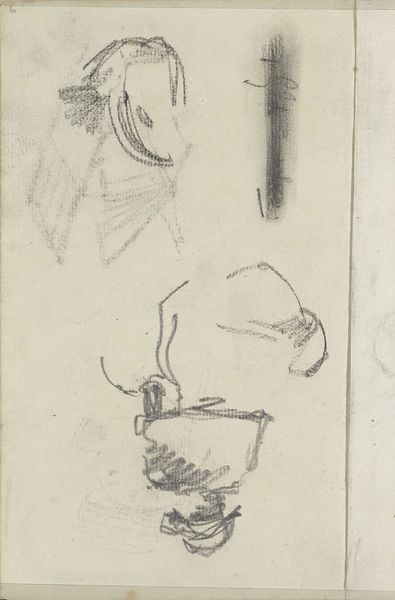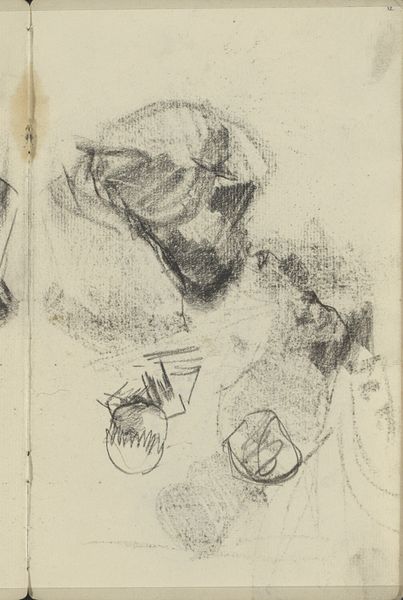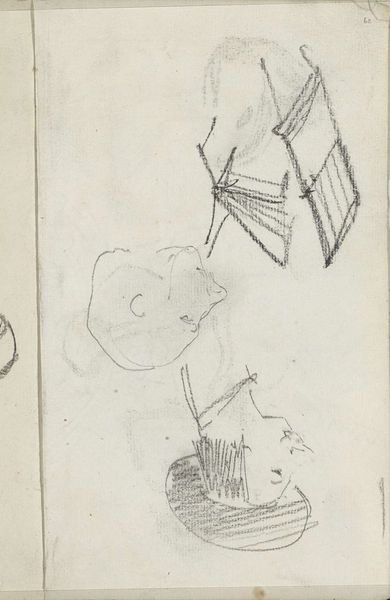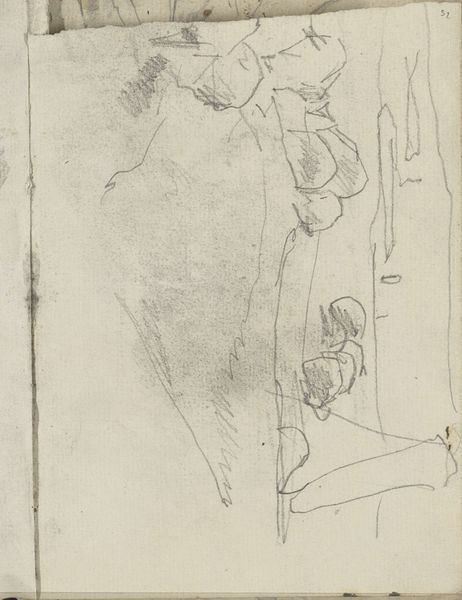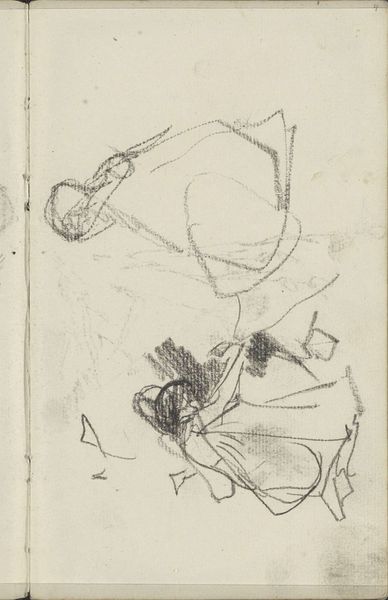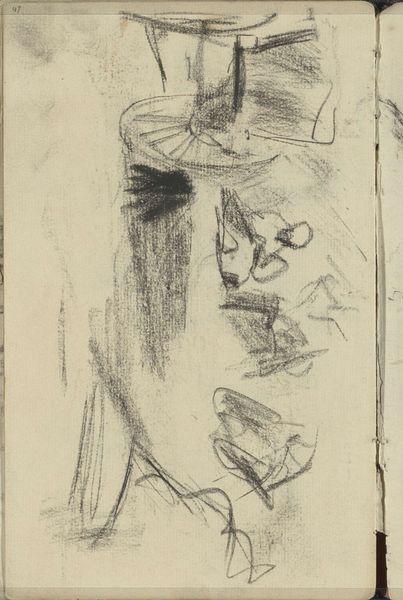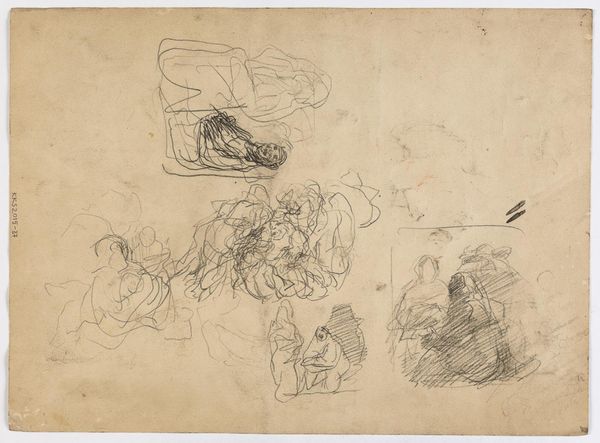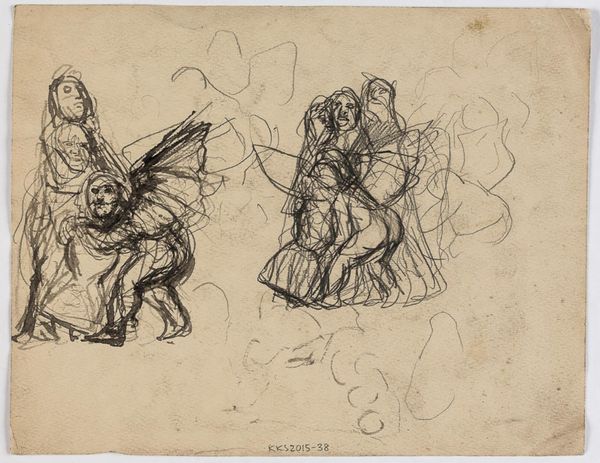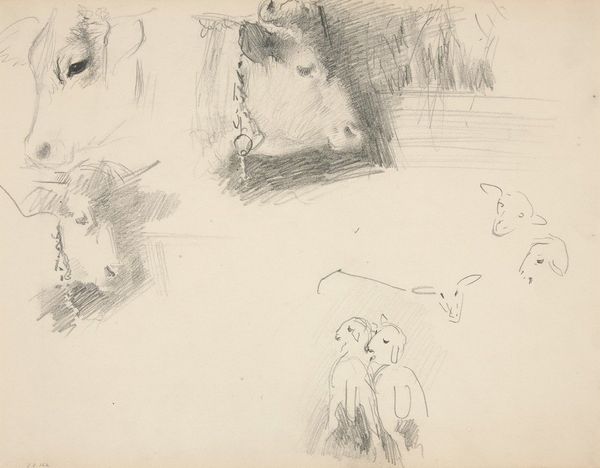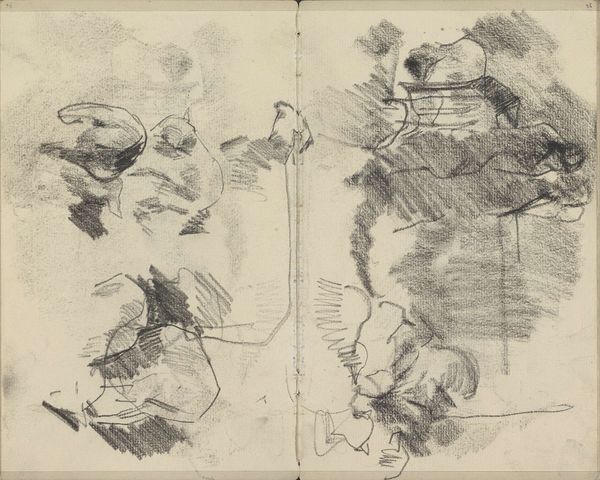
drawing, ink, pencil
#
portrait
#
drawing
#
quirky sketch
#
pen sketch
#
personal sketchbook
#
ink
#
sketchwork
#
ink drawing experimentation
#
pen-ink sketch
#
pencil
#
sketchbook drawing
#
storyboard and sketchbook work
#
academic-art
#
sketchbook art
#
realism
#
initial sketch
Dimensions: height 128 mm, width 130 mm
Copyright: Rijks Museum: Open Domain
Editor: So, we're looking at "Studieblad met vijf hoofden" – Study Sheet with Five Heads – created between 1776 and 1815 by Marie Lambertine Coclers, using ink, pencil, and other drawing materials. I find the rough quality quite appealing; it has this very intimate, sketchbook feel to it. What's your take on it? Curator: The intimacy is key. Think about the social context of art academies at that time. Drawing studies like this weren't necessarily meant for public display. They represent the artist's private labor, a critical stage in mastering the representation of the human form. Consider the role of academic training; how did institutions shape artistic production and taste? Editor: That's interesting! So, this wasn’t meant to be a finished product. It was part of her learning process? I see the faces are all slightly different. Curator: Exactly! And that variety is important. Look at the range of ages and expressions. It points to the artist’s engagement with realism but also potentially reflects the societal roles assigned to different figures. Notice the head coverings – what do they signify about the subjects’ social standing or occupations? Editor: I hadn’t thought about the head coverings. I guess they aren't just stylistic choices; they carry cultural meaning. So by practicing portraits in this way, the artist is engaging with both the artistic conventions and the social conventions of the time? Curator: Precisely. These 'Study Sheets' became tools of empowerment. Understanding how such artworks participated in – or perhaps even subtly challenged – the prevailing socio-political landscape is the first step towards seeing art with fresh eyes. Editor: I never considered art training could be such a complex reflection of society. Thank you. This has broadened my view considerably. Curator: Likewise. Thinking about art's function in culture makes us better viewers and contextualizes artwork more deeply.
Comments
No comments
Be the first to comment and join the conversation on the ultimate creative platform.
